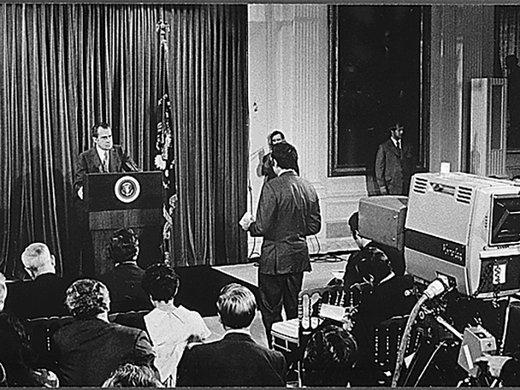As nations around the globe grapple with a precipitous decline in financial support for journalism, new policies for protecting local media — and, by extension, democracy — are beginning to emerge. Many countries have begun forays into supporting noncommercial journalism, ranging from not-for-profit initiatives such as La Presse in Montreal to various kinds of media subsidies. Even the relatively libertarian United States is broaching serious discussions about subsidizing local journalism and other plans to support the beleaguered newspaper industry — still the last major bastion for producing original reporting.
The good news is that policy makers finally see the crisis in journalism as a policy problem and are considering various proposals. The bad news is that many of these well-meaning efforts would, ultimately, only serve to prop up failing commercial outlets rather than ease them toward a more sustainable, nonprofit future. Short-term measures that disproportionately benefit incumbent news organizations fail to heed a key point: in the digital era, most forms of local journalism are no longer commercially viable. As evidence of a systemic market failure becomes abundantly obvious, democratic societies must acknowledge that profit-driven media systems cannot provide for all of our information needs. Public options are paramount.
Long in thrall to market fundamentalism, the United States has been slow to learn such lessons. The time has come to reject this “American media exceptionalism” and reframe the debate over journalism’s future by clearly delineating why and how democratic societies can and must intervene via policy. The argument I make here draws from previous work — in particular, my recent book, Democracy Without Journalism? — but is one I continue to develop as policy debates evolve. While my emphasis is on the American experience, this analysis holds implications for every country that is currently confronting a structural crisis in journalism.
The Perfect Storm
Steeped within a neo-liberal paradigm that has reigned supreme for decades, US policy makers’ default position is that the market will always self-correct. Libertarian interpretations of the US Constitution’s First Amendment further bolster the view that government interventions in media markets are inherently suspect. Predicated on the assumption that such “intrusions” should be minimized, American policy making is characterized by an aversion to media subsidies and public interest protections generally. Combined with core structural vulnerabilities — lightly regulated news organizations, concentrated media ownership, an overreliance on advertising revenues, and an underfunded public media system — this context has engendered a perfect storm for a systemic journalism crisis in which American news outlets were hit harder and earlier compared to their global counterparts.
Journalism’s move to digital formats — where ads fetch a fraction of the price of traditional print ads — meant that advertising revenues no longer support the level of news media they once did. Even at its height, this advertising-dependent model was never ideally suited to provide all members of society with adequate news and information. With Facebook and Google capturing the vast majority of digital advertising revenue, this model has irreparably collapsed.
Today even the staunchest defenders of the status quo must concede that the old advertising model is never coming back. Moreover, other business models such as subscriptions offer insufficient support for most news outlets beyond the largest national newspapers, news organizations with global reach, or strong niche outlets. For the most part, journalism’s commercial era is over. Yet local media institutions provide an essential public service that a healthy democratic society requires, regardless of journalism’s profitability.
In the wake of a global pandemic, democracies are newly sensitized to how local journalism provides critical information for vitally important issues, ranging from public health to conducting fair elections. But despite this new-found respect for the fourth estate, the newspaper industry has continued to implode, losing 57% of its employees between 2008 and 2020, resulting in hundreds of closures and news deserts sprouting up across the country.
Given that the devastation of local journalism will only continue, such glaring market failure should compel government intervention. Public goods — often understood as vital necessities in theory but rarely treated as such in practice — require public investments and protections from unfettered commercialism. Subjecting these services entirely to the market gradually leads to disinvestment over time.
In other words, the journalism crisis is a human-made disaster. Allowing the market to drive local journalism into the ground is a political choice. Americans have been indoctrinated to think about their media system — to the extent that they think about it at all — as the natural product of the free market. This is a libertarian fantasy. The government is, and has always been, deeply involved in the media system. The concern should be over how it’s involved.
Why Governments Must Intervene
Government in a democracy has an affirmative duty to guarantee a free — and, by implication, functional — media system. This tacit assumption has existed since the dawn of the American republic, and strains of subsequent legal thinking lay further groundwork for policy interventions to guarantee a viable media. A new book by former Harvard Law School dean Martha Minow, Saving the News, clearly demonstrates that while the First Amendment forbids abridgement of US citizens’ freedoms, it does not forbid government from intervening to ensure there are such freedoms to begin with. After all, the whole notion of press freedom is rendered meaningless without a press to be kept free.
Minow’s argument is backed up by a progressive tradition of legal discourse that legitimates such affirmative government action — although it’s a tradition that’s often conveniently ignored. For example, the Supreme Court Justice Hugo Black argued that nothing in the First Amendment prevented the government from ensuring the necessary conditions for a healthy press system: “It would be strange indeed,” he wrote, “if the grave concern for freedom of the press which prompted adoption of the First Amendment should be read as a command that the government was without power to protect that freedom.” Justice Felix Frankfurter further maintained that journalism shouldn’t be treated as a mere commodity “like peanuts or potatoes” valued only for its “commercial aspect.” Rather, it’s “indispensable to the workings of our democratic society,” and therefore deserves special “considerations.” Justice Potter Stewart asserted that the “Free Press guarantee is, in essence, a structural provision of the Constitution” (his emphasis). Thus, the First Amendment goes beyond just ensuring individual freedom of speech and expression; it also extends government protections that treat the press as an autonomous institution.
Taken together, such proclamations suggest that the First Amendment’s primary purpose isn’t just to protect us against government tyranny but also to create greater potentials for human freedom. These arguments serve as an important weapon against market libertarianism and a First Amendment absolutism that privileges negative freedoms (freedom from government intrusion) over positive ones (freedom to access rich and diverse sources of information, create our own journalism, and have opportunities to express ourselves through media).
Americans learn in school that self-governance requires a free press, yet they often take such democratic infrastructure for granted, neglecting the fact that governments must continuously maintain and protect such systems. But once we establish why governments must intervene, the conversation over how they should do so begins. Policy debates in the United States have been stalled over this question for many years. At long last this is beginning to change.
Public investments would, ideally, go only to independent, nonprofit outlets. Exceptions might be made for some commercial entities — for example, to provide temporary emergency funds, especially during the pandemic, and to support communities that have no established non-profit/public outlets.
The Policy Interventions We Need
Over the past year, partly in response to the pandemic accelerating the evisceration of local media, the US government has begun to consider policy responses to its domestic journalism crisis; for example, the Local Journalism Sustainability Act. Nonetheless, although the debate has evolved in positive ways, there remains a lack of clarity as to the root causes of the crisis — as well as to the policies needed to combat this systemic market failure, namely, public media subsidies.
These subsidies should do two things: first, they must ensure that funding goes toward producing journalism (and not simply to owners and investors — i.e., socializing losses and privatizing profits), and second, they should help transition failing commercial models to nonprofit and public institutions.
Such subsidies might focus on jobs, subscriptions, particular kinds of content or news organizations’ operations in general. One example of a journalism jobs program could take after the Federal Writers’ Project, which supported cultural workers and writers during President Franklin D. Roosevelt’s New Deal.
Another subsidy plan that often resonates with diverse constituencies is sometimes referred to as a “democracy voucher” program. Many potential variations of this plan exist, but they generally ensure that everyone receives a set sum to allocate toward the local media of their choice. One approach would be to base it on a voting mechanism run through county elections and administered by the post office. Another plan could take the form of refundable tax credits that people can pay towards donations or subscriptions. But all allow individuals, rather than government agencies or other centralized bodies, to directly fund local journalism.
Such public investments would, ideally, go only to independent, nonprofit outlets. Exceptions might be made for some commercial entities — for example, to provide temporary emergency funds, especially during the pandemic, and to support communities that have no established non-profit/public outlets. With such exceptions, policy makers should attach strong conditions and ensure these funds go toward public service journalism rather than to padding a for-profit organization’s bottom line. Such conditions should include mandated public interest obligations (ascertainment duties, commitment to diversity, transparency, and so forth) as well as proof that these outlets are transitioning toward low- or nonprofit models under local ownership and control.
Other policies might salvage what’s worth saving of the newspaper industry. A combination of prepackaged bankruptcies, tax incentives, and new media ownership restrictions could incentivize both newspaper buyers and sellers to ensure that struggling newspapers and broadcast media transition to local nonprofit ownership or public-benefit corporations committed to long-term public service — and not to hedge funds that seek only short-term profits to the detriment of jobs and local communities. One potential model — based on a historical experiment in Los Angeles in the early 1900s — is to establish municipal newspapers that serve as a forum for diverse voices and viewpoints.
Beyond these kinds of subsidies and experiments, we need a systemic approach to what is, at base, a structural journalism crisis. The market is part of the problem, not the solution, to this crisis. We need public alternatives to failing commercial models. We could, for example, expand existing infrastructures such as public broadcasting. Reimagined and expanded into a new public media system, individual radio and television stations could become multimedia hubs for various forms of digital news.
Looking Ahead: A Post-Commercial Model
The ultimate aim should be to design a new operational model for journalism — one that preserves the profession and strengthens its role in democracy but is not wedded to shoring up the current model, which never actually worked all that well, even when newspapers were making obscene amounts of money for their publishers. More long-term efforts should focus on building public alternatives to failing commercial models and on ensuring that underserved communities — in particular, communities of colour — govern their own media institutions. The journalism crisis is an opportunity to not just decommercialize but democratize our news media.
A major advantage with public media is its systemic commitment to universal service. And, in theory, public media should serve as a potential safety net for when the market fails to support baseline levels of vital news and information. Indeed, this is already happening in places such as the United Kingdom and New Zealand, through their “local democracy reporting” programs. In the United States, however, public media receive a mere pittance compared to other democracies. At the federal level, US expenditures amount to only $1.40 per capita and 0.002 percent of GDP, which is almost literally off the chart.
What might an expanded public media infrastructure look like and how could we support it? In Democracy Without Journalism? I described six layers that we need to radically reform to create a new public media system:
- the funding layer (how will this public media system be financially sustained?);
- the governance layer (how will resource allocations and other key decisions be made democratically?);
- the ascertainment layer (how will information needs be determined?);
- the infrastructure layer (how can we ensure distribution of and access to information, including universal broadband service);
- the technological layer (how do we design algorithms that privilege public media in search and in news feeds?); and
- the engagement layer (how can we ensure that local communities are involved in making their own news and contributing their stories?).
While the risk of government meddling is always a legitimate concern, too often it becomes a conversation-stopper. Fortunately, this is a fixable problem; structural safeguards, ranging from setting up an independent fund not tied to discretionary spending to devolving decisions about resource allocations to independent and local governing boards, can help prevent abuses of power.
As we seek to empower local communities to govern and make their own media, we could again look to history for inspiration. The 1960s’ Community Action Program in the United States required federally funded anti-poverty programs to include “maximum feasible participation” in all decision making by communities most affected by these policies. Similarly, policy makers should mandate that all public media subsidies be overseen by the communities in which media operate.
In terms of paying for it, the Australian model is, unfortunately, inspiring a growing number of countries to try redirecting advertising revenue from platforms to publishers. This is wrong-headed and counterproductive. Rather than merely redistributing wealth back to those who themselves are complicit in defunding the news — that is, the big commercial news chains and corporate media conglomerates — we should “democratically launder” a percentage of the platforms’ profits and reallocate them to fund independent public media. Even with that desperately needed support, much more than one revenue stream will be necessary to sustain a new public media system, which ideally would come directly from the government treasury like funding for other essential services, systems, and infrastructures.
The long-term, unabashedly utopian vision should be a publicly financed news cooperative — what I’ve termed a public media centre (PMC) — in every community. Owned, operated, and controlled by local residents, these PMCs can serve as new anchor institutions that provide essential news and information to all communities, thereby cutting against the informational redlining endemic to commercial systems that privilege some audiences over others and champion profits over democracy.
In the United States, PMCs could combine with other public infrastructures such as the United States Postal Service, which historically subsidized news delivery to all members of society. Its more than 30,000 offices across the country — along with libraries and other public spaces — could house PMCs that serve as news feeders for the entire media system.
Ultimately, we must see this transitional moment as transformational for journalism, offering us an opportunity to create a new social contract for news organizations to be more accountable to the diverse audiences they serve rather than to advertisers and shareholders. In the end, a public system can and should guarantee jobs and journalism to local communities — and not just generate profits for a small number of media owners and investors.
Americans lost a precious decade awaiting new business models and technological saviours when they could have been restructuring local journalism for the long term. There is no more time to lose. Now it’s urgent for us to experiment with non-commercial media institutions. We must expand our imagination about what’s possible — and what’s necessary — for democracy to survive and thrive.



